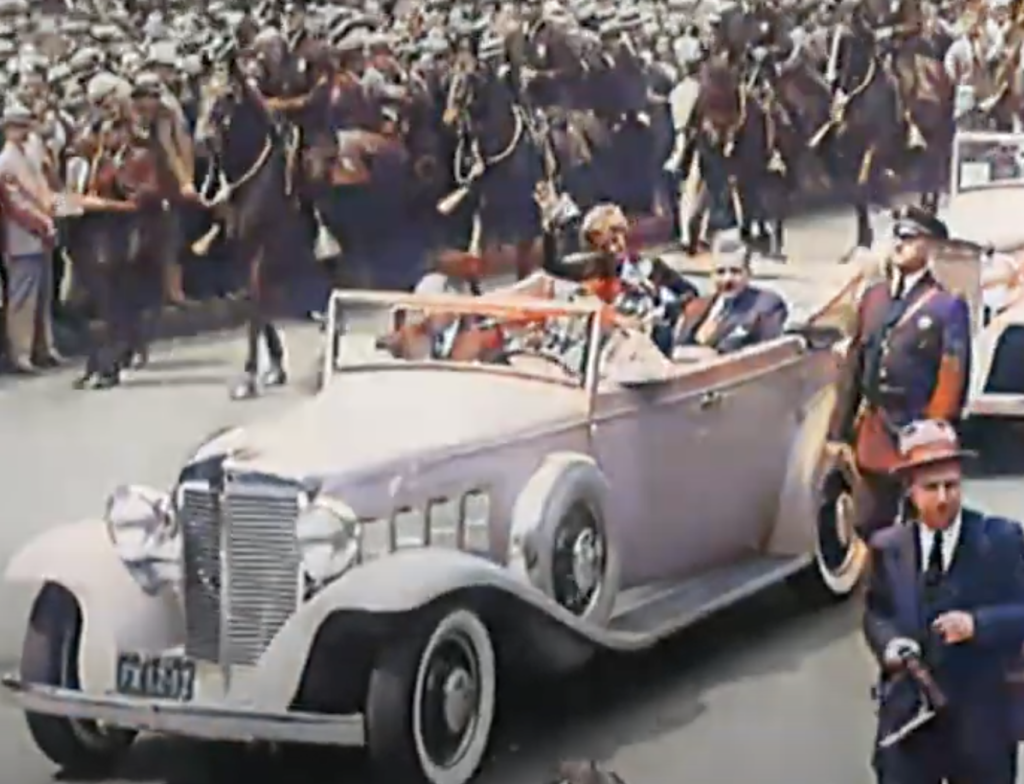Amelia Earhart, the name resonates through the annals of history as a symbol of courage, determination, and groundbreaking achievement. Born on July 24, 1897, in Atchison, Kansas, Earhart’s fascination with aviation began at a young age and culminated in a series of accomplishments that not only shattered gender barriers but also left an indelible mark on the field of aviation.
Pioneering Achievements
Earhart’s aviation career was a series of firsts. In 1928, she became the first woman to fly across the Atlantic Ocean as a passenger, which catapulted her into international fame. However, not content to be merely a passenger, Earhart set out to achieve what no other woman had done before. In 1932, she became the first woman to fly solo across the Atlantic, earning her the Distinguished Flying Cross from the U.S. Congress, a testament to her pioneering spirit and skill.

June 20 – Amelia Earhart following transatlantic flight.
Her list of accomplishments continued to grow: she was the first person to fly solo from Hawaii to the U.S. mainland, the first woman to fly solo nonstop coast to coast across the United States, and set numerous speed and distance aviation records. Earhart was not just a record-setting aviator; she was a passionate advocate for women in aviation, helping to found The Ninety-Nines, an international organization for female pilots.
The Disappearance
On July 2, 1937, Earhart and her navigator, Fred Noonan, disappeared over the Pacific Ocean while attempting to circumnavigate the globe, a mystery that has captivated the world for decades. Despite extensive search efforts, neither Earhart nor Noonan was found, leading to a plethora of theories about their fate.
A Breakthrough Discovery
Recent reports suggest that the long-standing mystery surrounding Earhart’s disappearance may be closer to being solved. An underwater exploration team claims to have found what appears to be the wreckage of Earhart’s Lockheed Model 10-E Electra plane in the depths of the Pacific Ocean. The discovery was made near Nikumaroro Island, part of the Phoenix Islands in the western Pacific Ocean, an area long speculated to be the final resting place of Earhart’s ill-fated flight.
The exploration team, equipped with advanced technology, has provided compelling evidence that the wreckage corresponds to Earhart’s plane, including measurements and artifacts that match historical records of the Electra. While the findings are pending further verification, this discovery could potentially offer closure to one of aviation’s greatest mysteries and provide insight into the final moments of Earhart’s legendary flight.
Legacy and Impact
The potential discovery of Amelia Earhart’s plane is more than just a historical footnote; it is a reminder of the enduring legacy of a woman who dared to dream and defy the conventions of her time. Earhart’s achievements continue to inspire generations of aviators, explorers, and dreamers, proving that the sky is not the limit but the beginning.
As we await further analysis of the underwater discovery, the spirit of Amelia Earhart soars on, a testament to the power of courage, perseverance, and the unyielding quest for adventure. Whether or not the wreckage is definitively confirmed as Earhart’s, the fascination with her life and the enduring mystery of her disappearance remind us of the impact one individual can have on history and the importance of continuing to explore, question, and discover.
The potential unraveling of Amelia Earhart’s final journey brings us closer to understanding the legacy of a true pioneer, whose life’s work and untimely disappearance continue to inspire and intrigue. As we look to the skies and beyond, Earhart’s spirit of exploration and determination remains a beacon for future generations to follow.

This is totally amazing – love Amelia and love how i can see her in full color